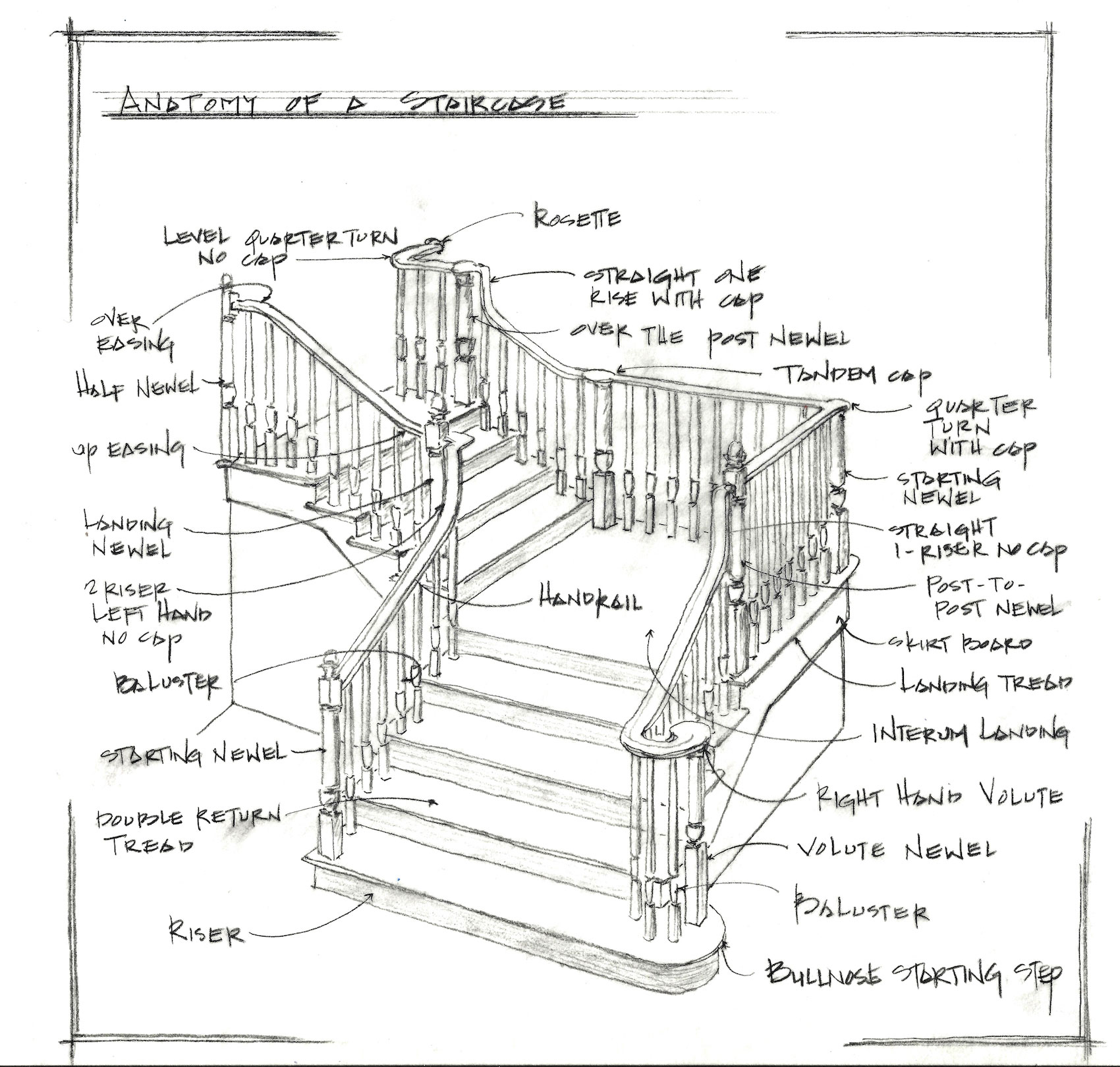
The vertical posts which support the railing of the staircase; balusters are typically wood or metal.
Refers to the entire system. Made up of handrail, balusters and newels.
The stair parts used to form a smooth transition when the handrail changes height or makes a turn at a landing or a balcony. Common types of fittings are gooseneck, volute, overeasing, upeasing, quarterturn with cap and without cap, tandem cap
The horizontal or rake member of a balustrade system. It sits on top of the balusters and is supported by newell posts.
Level platform separating flights of stairs.
Moulding used to give the appearance of a tread on landings and balconies.
Major support posts for the balustrade system. Larger and heavier than the balusters, newels are located at the bottom and top of a staircase and at turns and critical support areas of balcony rails. Can be over-the-post or post-to-post
the edging of a tread or landing tread which protrudes beyond the face of the riser or skirt board.
Vertical measurement from the surface of one tread to the surface of the next tread.
The vertical components of a stair which support the treads.
Horizontal measurement from the face of one riser to the face of the next riser. This is the depth of the tread without the nosing.
decorative trim board used on the open and closed side of the stairway and to trim the area underneath the landing treads.
The first tread and riser at the bottom of the staircase. Can be square or round (round is typically called a bullnose)
The top surface of a stair on which one steps.
©2025 Copyright – Image Design Stairs | All Rights Reserved